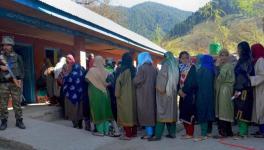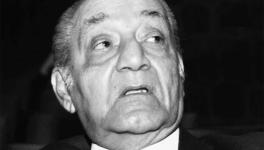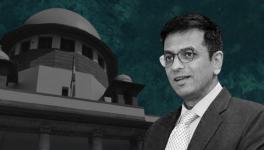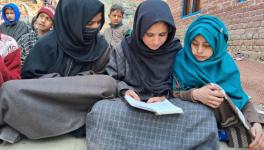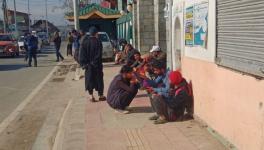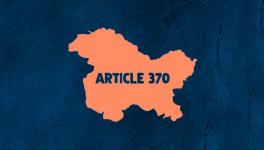Kashmir: Key Issues Before Supreme Court Hears Art 370 Challenges
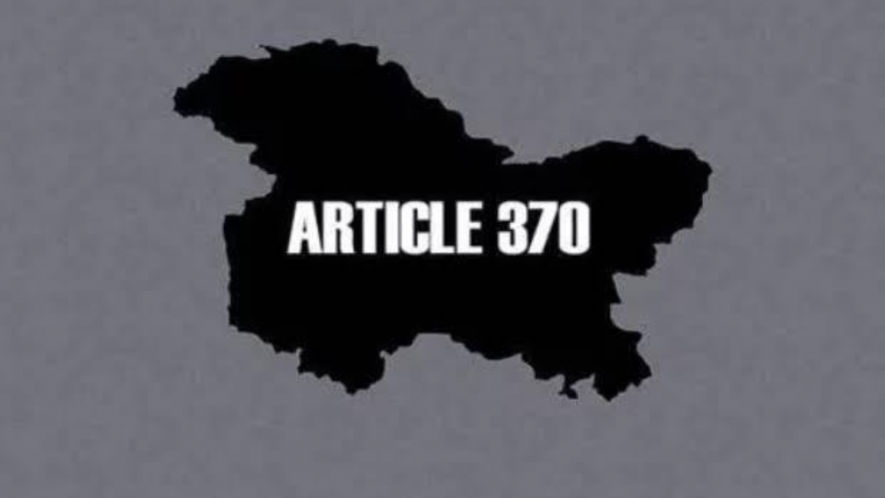
On 2 August, the Supreme Court will begin day-to-day hearings on a batch of petitions challenging the reading down of Article 370. The daily live proceedings will be watched with keen interest by direct stakeholders and constitutional lawyers nationally and internationally, apart from vast communities of scholars across disciplines. The political context underpinning developments around Article 370, and its abrogation, call for an informed and honest discussion rather than polemical positioning. The apex court would also benefit from such discussions on a subject whose realities are far from linear.
First, the contextual genesis of Article 370 must be comprehended. The provision was introduced in the Indian Constitution concomitant to a Muslim-majority Jammu and Kashmir (J&K) led by Sheikh Abdullah, challenging the two-nation theory and siding with a democratic and secular India in 1947. As argued by Foreign Minister S Jaishankar, indeed, the draft of the instrument of accession signed by princely ruler Hari Singh and Mountbatten and the other 564 princely states were precisely the same. The other princely states were Hindu-majority, whereas J&K was a Muslim-majority province.
Braving the communal conflagration in former British India, particularly North India, and the divisive two-nation theory, Abdullah, then the unquestioned popular leader of the Kashmir valley, sided with India at the critical juncture.
Without going into the contested post-accession claims on events related to Abdullah’s infamous arrest on 9 August 1953, the Indian Army’s quick and popular success, after the accession, against the primarily Pashtun invaders in the Kashmir valley was enabled by the ground support of Abdullah and his National Conference cadre, who, by all independent accounts, had unquestioned popular support in the Kashmir valley. His cadre provided the Indian Army with pinpointed information about the presence of raiders, and many have highlighted how this gave accession a moral, and not just legal, basis.
As India’s representative at the UNGA and UNSC, Abdullah defended India in February 1948. Participating in one J&K-related discussion on 5 February that year, he said, “When the raiders came to our land, massacred thousands of people—mostly Hindus and Sikhs, but Muslims, too—abducted thousands of girls, Hindus, Sikhs and Muslims alike, looted our property and almost reached the gates of our summer capital, Srinagar, the result was that the civil, military and police administrations failed. In the dead of night, the Maharajah left the capital along with his courtiers, and the result was absolute panic.
“There was no one to take over control. In that hour of crisis, the National Conference came forward with its 10,000 volunteers and took over the administration of [Kashmir]. They started guarding the banks, the offices and the houses of every person in the capital. This is how the administration changed hands. We were de facto in charge of the administration. The Maharaja, later on, gave it a legal form.”
In less than six years, Abdullah was dethroned and arrested on 9 August 1953 and thus began a chapter of the tumultuous relationship between New Delhi and the Kashmir valley.
A corpus of literature exists about factors that led to this estrangement. With the hindsight of 57 years, the birth pangs of a newly independent country, including inherent insecurities about the unity of the country of the then leadership in a Partition-ravaged North India, were contributing factors to the misunderstandings. Today’s context of a relatively economically more prosperous India with a qualitative weight in the international system cannot be compared to 1953 in terms of the attitude of big powers vis-à-vis a then vastly poor India.
Second, the action taken on 5 August 2019 was no different from earlier acts that substantially hollowed out provisions of Article 370. The difference is that this time around, Parliament completely de-operationalised the article. The realities are far from linear, and some of these require threadbare discussion, as Article 370 was far from a fool-proof mechanism to protect state rights or against the arbitrariness of the Center. For instance, if Article 370 existed as it was introduced, the apex court could not have adjudicated the present case. If the Supreme Court’s jurisdiction had extended to the state in 1953, as a leading scholar on Kashmir once said, “Abdullah could not be arrested under any law then in force in India.”
The jurisdiction of the Supreme Court, Election Commission of India and Comptroller and Accountant General were extended to J&K at various intervals. The J&K Constitution gave unlimited powers to the Governor during Governor’s rule, a provision repeatedly used to dilute its special status. In all Indian states, a government’s failure would result in President’s Rule, whereas in the former state of Jammu and Kashmir, Governor’s Rule would initially be imposed for six months. In this period, Section 92 of the J&K Constitution would provide legislative powers to the Governor. In 1986, this provision enabled the Governor to extend Article 249 of the Indian Constitution to the [erstwhile] state to empower Parliament to legislate even on a matter in the State List, on the strength of a Rajya Sabha resolution.
Third, the proponents of Article 370 underestimated the political resonance of its abrogation across the country. This is also because of the rigid interpretation of its interlinked provisions, such as Article 35A of the Indian Constitution. This article empowered the J&K state legislature to define “permanent residents” of the state and provide them with special rights and privileges. This prevented some long-term residents in J&K from acquiring domicile rights, including Partition refugees, many of whom were Dalits and poor. These facts proved to be at the heart of arguments presented by the defenders of the abrogation.
It is also true that most political parties in India, except the Dravida Munnetra Kazhagham and the Left parties, did not come out in the open against the abrogation of Article 370. Prime Minister Narendra Modi referred to the plight of the “Valmiki community” in his speech to the nation on 9 August 2019. It was not a coincidence that the Bahujan Samaj Party’s president, Mayawati, was among the first opposition leaders to back the Centre’s decision. She tweeted on 6 August: “The demand to implement the Constitution’s ‘social, economic and political justice’ in the country by removing Article 370 and 35A was long pending. The BSP hopes the people there will get the benefits of the Central government’s decision.” The same cavalier attitude was demonstrated by the J&K political elite on the issue of political reservation to the Scheduled Tribes. Political reservation to the Scheduled Tribes, part of the new legislation, will primarily benefit Gujjars and Bakerwals, two 100% Muslim communities in J&K.
Four, the abrogation of Article 370 was also accompanied by the creation of the new Union Territory of Ladakh on 5 August 2019, after its separation from J&K. In 2019, it did not take too long for the initial excitement over the new Union Territory status to dampen in Leh. The lack of clarity over the powers of the elected councils of Leh and Kargil in the new constitutional arrangement proved the trigger. In the new arrangement, the un-elected Lieutenant-Governor is the de-facto head of the government and state. Out of the nearly Rs 6,000-crore budget allocated annually for Ladakh by the Centre, approximately 9% has to be shared by the two councils. The rest is under the Lieutenant-Governor’s administration.
The working season in the region is less than six months, and the principle of rolling over the unspent funds was followed before 5 August 2019. Now, the unspent funds lapse. There is also an absence of a mechanism for institutional coordination between the administration of the Lieutenant-Governor and the elected council, with the senior bureaucrats reporting to the former. There is also a demand for the application of a northeast-centric Sixth Schedule of the Indian Constitution for Ladakh.
The Sixth Schedule was primarily designed for tribal areas in Assam, Meghalaya, Tripura and Mizoram, where autonomous district and regional councils are endowed with legislative, executive, judicial and financial powers. The viability of these demands may or may not be feasible, but this rare moment of unity between Leh and Kargil is hard to ignore.
The new political trends in Ladakh occur in the context of global warming and other significant climatic changes, with glaciers that earlier abounded in the cold desert melting fast. This has direct implications for the low-lying, densely-populated Indus water basin. This challenge, coupled with India and China’s continued military contestations, is acute.
Five, the abrogation of Article 370 is a setback to an honest debate about federalism and its evolution in a diverse society like India. In fact, the Bharatiya Janata Party’s past leadership was not indifferent to discussing issues around devolution. Under the previous BJP-led government, interlocutors, such as Arun Jaitley and KC Pant, were appointed interlocutors on J&K.
Compared with many Western democracies, such as the United States or the United Kingdom, the Constitution of India is less federal. However, in the context of the global south, it accommodates a degree of asymmetrical federalism. This is illustrated in parts XXI and XXII of the Indian Constitution, whose Article 371 grants some states temporary, transition and special provisions.
In fact, in the case of Prime Minister Narendra Modi’s home state, Gujarat, special powers had been given to the state Governor to create independent development boards for Saurashtra and Kutch. There are customised provisions for Maharashtra (Vidarbha and Marathwada) in addition to Article 371A (Nagaland); 371B (Assam); 371C (Manipur); 371D and E (Andhra Pradesh); 371F (Sikkim); 371G (Mizoram); 371H (Arunachal Pradesh) and 371I (Goa).
Recent events in Manipur prove that the design of federalism for a particular region is a work in progress and has to constantly evolve to address the aspirations of diverse communities and relations among them without abridging fundamental rights.
Within the scope of the global south struggling to reconcile aspirations of diverse societies, the experiences of India’s federalism are considered important as compared with the experience of Western countries, which have radically different socioeconomic contexts. As part of work in the multilateral arena, knowledge of Indian experiments in federalism helped this writer places the challenges of other multi-ethnic and multi-religious societies, like Myanmar, in perspective and constructively engage on these issues.
Sadly, the narrative around Article 370 has become confined to symmetrical federalism and may have fallen victim to majoritarian impulses on either side, apart from other vectors. As a result, both supporters and detractors lost an opportunity to advance discussions around the aspirations and challenges of India’s diverse units within a more logical and constructive ambit of asymmetrical federalism.
The writer is the author of two books on Jammu and Kashmir, including Across the LoC, published by Columbia University Press. The views are personal.
Get the latest reports & analysis with people's perspective on Protests, movements & deep analytical videos, discussions of the current affairs in your Telegram app. Subscribe to NewsClick's Telegram channel & get Real-Time updates on stories, as they get published on our website.










